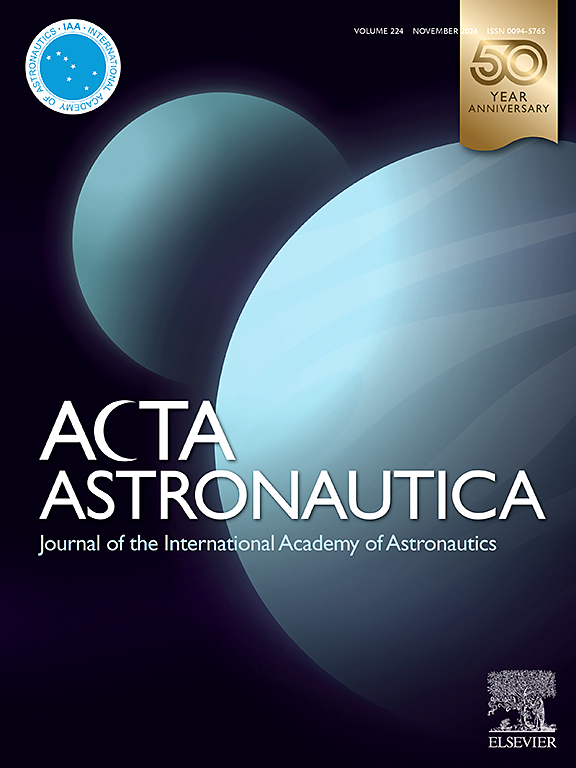Architecting CubeSat constellations for messaging service, Part II
IF 3.1
2区 物理与天体物理
Q1 ENGINEERING, AEROSPACE
引用次数: 0
Abstract
Data collection and exchange stand as a cornerstone technology driving the advancement of technological development over recent decades. However, many remote and hard-to-reach regions remain devoid of terrestrial communication infrastructure. Telecommunication satellites offer a comprehensive solution, facilitating data transfer to even the most remote areas and bridging existing connectivity gaps.
Currently, there are two distinct types of systems under development by private companies aiming to enable direct-to-handset connectivity. The first type strives to offer mobile connectivity based on 3GPP standards with unmodified smartphones but these satellites are expensive and heavy. The second type of satellites provides low data rates connectivity using Internet of Things technologies to send and receive data packets. These satellites, in contrast, are more lightweight, low-cost, and can take the form of CubeSats or even PocketQubes. This study proposes a fusion of the advantages of both systems, contemplating a constellation for messaging services employing low-power user devices and LoRa technology.
In Part I of the study the LoRa channel capability was analyzed to enable the transmission of at least 1 message per day in the area with the highest concentration of users, uncovered by terrestrial cell towers and downselected 73 different LoRa connectivity payloads. Part II concentrates on various aspects of constellation design, encompassing the sizing of the CubeSat platform, messages transmission simulation approach, and constellation launch strategies. Employing a trade-space exploration approach, the study identified a preferred Low Earth Orbit (LEO) constellation architecture out of a pool of 11 826, capable of satisfying 51% of the demand and yielding the highest revenue among all the considered constellations. The performance analysis revealed that coverage and spreading factor are the paramount factors in serving users.
The architectural analysis framework presented here can serve as a valuable tool for the preliminary design and sizing of a constellation for different services based on short data packets transmission, while the gained insights regarding performance drives have the potential to enrich the development of future Internet of Things connectivity projects.
求助全文
约1分钟内获得全文
求助全文
来源期刊

Acta Astronautica
工程技术-工程:宇航
CiteScore
7.20
自引率
22.90%
发文量
599
审稿时长
53 days
期刊介绍:
Acta Astronautica is sponsored by the International Academy of Astronautics. Content is based on original contributions in all fields of basic, engineering, life and social space sciences and of space technology related to:
The peaceful scientific exploration of space,
Its exploitation for human welfare and progress,
Conception, design, development and operation of space-borne and Earth-based systems,
In addition to regular issues, the journal publishes selected proceedings of the annual International Astronautical Congress (IAC), transactions of the IAA and special issues on topics of current interest, such as microgravity, space station technology, geostationary orbits, and space economics. Other subject areas include satellite technology, space transportation and communications, space energy, power and propulsion, astrodynamics, extraterrestrial intelligence and Earth observations.
 求助内容:
求助内容: 应助结果提醒方式:
应助结果提醒方式:


